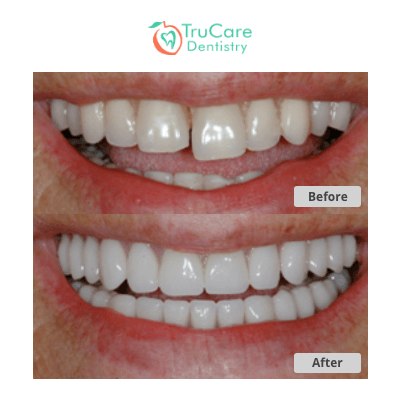
Tooth reshaping can improve your appearance, enhance your self-confidence, and assure you about having a perfect shaped tooth. Few people use braces to improve their smile, yet tooth reshaping is an easy elective.
Even though it’s a choice, this corrective strategy, otherwise called dental shaping, isn’t appropriate for everybody. It is what you need to think about before tooth reshaping, including the cycle, aftercare tips, and whether it’s ideal for you.
What is tooth reshaping?
Tooth reshaping, otherwise called odontoplasty, is a profitable, easy corrective dentistry strategy for fixing a chipped tooth, lopsided, skewed, or broken.
This snappy and effortless methodology includes eliminating a portion of the tooth enamel and afterward molding or stretching the tooth, which is having the problem.
Your dental specialist may likewise apply a tooth-hued holding gum that attaches to and solidifies on your teeth to accomplish an ideal shape.
Who should go for tooth reshaping?
It’s imperative to note; tooth reshaping is intended to address minor or small flaws on your teeth. It is not an option for treating major dental issues.
If your teeth overlap each other or are crooked and misaligned, your dental specialist may propose dental supports or another strategy rather than tooth reshaping.
To be a contender for tooth reshaping, you’ll need good teeth and gums. This method includes eliminating a portion of your tooth enamel. Your dental specialist won’t play out this strategy if you have rotten teeth, unhealthy gums, or infected pulp.
Drawbacks of tooth reshaping
Tooth reshaping is ideal as there’s no healing cycle, no sedation, and typically no numbing agent. Much of the time, your dental specialist can finish the strategy in a single meeting.
Although tooth reshaping has shown massive improvements on your teeth, cost of it varies depending on the extent of treatment.
Remember that tooth reshaping is a sort of corrective dentistry, so your insurance probably won’t pay for the procedure. They may cover the method when reshaping is done because of harm done due to an accident.
There’s additionally the danger of your dental specialist eliminating some of your enamel and might even develop sensitivity.
How does tooth reshaping work?
Generally, tooth reshaping is a basic, quick cycle. The initial step is to have a dental assessment and X-rays, so your dentist can check your teeth and gums’ strength.
Your dentist will check your enamel. If you have a weak or flimsy finish, your dentist will probably suggest another technique, for example, dental veneers.
Getting veneers includes setting a porcelain cover over the front surface of your tooth. It can likewise improve the presence of a chipped, broke, or misaligned tooth.
If you have good teeth, gums, and polish, your dentist starts the cycle by eliminating a portion of your tooth enamel by utilizing a sanding plate or fine diamond bur. This part of the process limits imperfections in a tooth.
Then, your dentist will trim or shorten the length of longer teeth, along with shaping and smoothing uneven teeth. It can improve your arrangement and bit.
In case you have a chipped tooth or holes in the middle of your teeth, your dentist can join tooth reshaping with bonding.
Holding utilizes a tooth-shaded resin — comparative in appearance to clay — to form and further shape a tooth. When applied to teeth, the holding material solidifies and matches the appearance of your regular teeth.
Your dentist applies the bond, shapes it, and afterward leaves it to solidify. In case you require bonding, then the procedure can take an extra 30 minutes to 60 minutes.
Note that bonding increases the general expense of tooth reshaping, as you may pay somewhere in the range of $300 and $600 per tooth.
Tooth reshaping aftercare tips
Tooth reshaping and bonding is an excellent method to improve the shape and presence of teeth. However, excellent aftercare is essential for keeping up your results. Your dentist will give aftercare guidelines.
In case that your dentist utilizes a bonding agent, even though it will solidify during the process, there’s a danger of the gum chipping or breaking. For instance, you need to avoid biting your nails, eating hard food, and chewing gum to bring down this danger.
There’s also the danger of staining with bonding, so ensure you brush your teeth twice a day to avoid teeth stains. You also need to decrease the usage of food sources and beverages that can stain your teeth, such as espresso and red wine.
Although there’s no downtime after tooth reshaping, you may have some minor sensitivity for a day after the procedure.
Final words
A chipped, broken, or the misaligned tooth can bring down your self-confidence, and you may hide your smile from others. Dental work can take care of many issues, yet these techniques can be expensive.
Fortunately, tooth reshaping gives a minimal effort option in contrast to improving the presence of your smile. This system isn’t ideal for everybody, though. Ensure you understand the pros and cons.
An odontoplasty can address minor corrective issues, such as little chips, tooth length, and minor misalignment. Depending on your teeth and enamel condition, your dentist may recommend another procedure to improve your teeth, like braces or veneers. If you are looking for the best teeth reshaping dentist feel free to get in touch with TruCare Dentistry.
